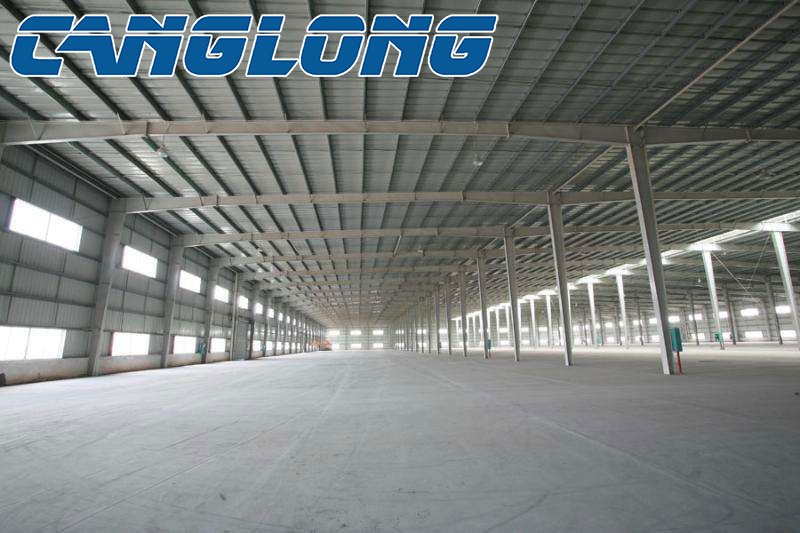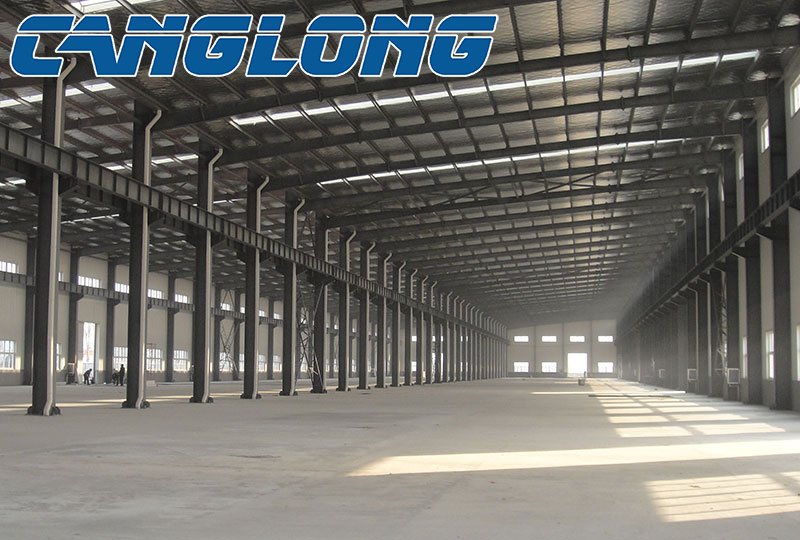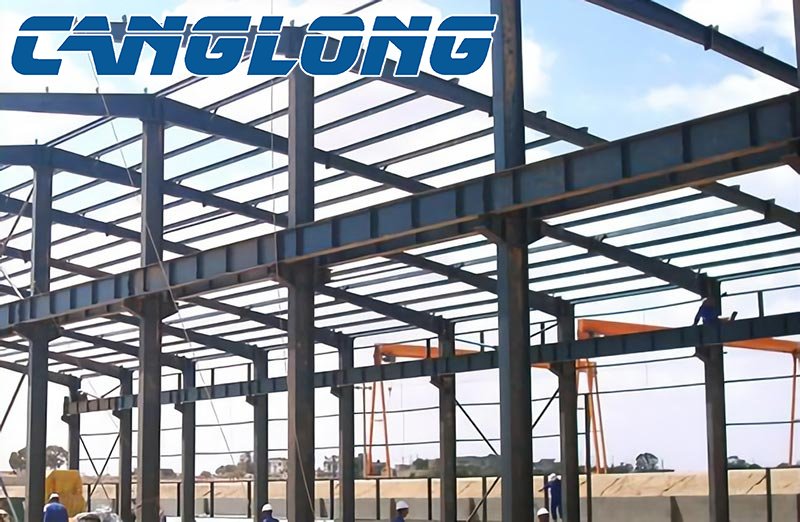How to take fire protection for building steel structure workshop?
The steel structure workshop has many advantages such as beautiful appearance, bright colors, various architectural forms, low cost, convenient installation, simple structure, and recyclability. However, the steel structure factory building also has a fatal disadvantage, it is not fire-resistant. Although steel is a non-combustible material, under the action of an open flame and high temperature, with the increase of temperature, the mechanical index will change greatly, and the bearing capacity and balance stability will be greatly reduced with the increase of temperature. At about 500 ° C, the decline is more obvious, and it will collapse in about 15 minutes.
Therefore, protective measures should be taken for building steel structure workshops. One is to protect the steel structure itself from fire, so that when the ignition temperature rises, it will not quickly exceed the critical temperature. Within the specified time, the steel structure can also ensure stability within a certain period of time to ensure the safety of personnel and property. The second is to set up effective fire compartments inside the industrial plant to prevent the spread and spread of fire.

Fire Protection of Steel Components of Steel Structure Workshop
The fire resistance rating of the steel member itself does not meet the requirements of the specification, so it is necessary to take corresponding fire protection measures for the steel member. Common fire protection measures include fire-resistant paint method, foam fire-resistant paint method and outer fire layer method.
1. Coating method
The flame retardant method is to spray fire retardant paint on the surface of the steel construction to improve its fire resistance. At present, China's steel structure fireproof coatings are mainly divided into two types: thin coating and thick coating, namely thin (including ultra-thin) and thick (H-grade). The thickness of the thin coating is less than 7 mm. When it catches fire, it can absorb heat and expand and foam to form a carbonized foam insulation layer, which prevents heat transfer to the steel structural, delays the rise of steel temperature, and plays a role in fire protection.
Its main advantages are: the coating is thin, the load on the steel structure workshop is light, the decoration is good, and the painting work on the surface of the steel construction with small area and complex shape is easier than that of the thick type. The thickness of the thick coating is 8-50mm, and the thickness of the thick coating is 8-50mm. The coating does not foam when heated, and relies on its low thermal conductivity to delay the rise of the temperature of the steel structure, thereby playing a role in fire protection. The two have different performance characteristics and are suitable for different occasions. However, no matter what kind of product, it must be tested by the testing agency before it can be selected.
2. Paint foam
Foam fire retardant coatings are flame retardant coatings made of various film-forming agents, flame retardants, foaming agents and other materials. Compared with general coatings, flame retardant coatings are basically the same in physical properties. The difference is that the paint film itself is not easy to burn after drying. When a fire occurs, the flame can extend to the combustibles of the paint, which has certain fire resistance.
Test: Apply ordinary paint to the wooden board and apply fire retardant paint. Once dry, baked with the same flame, the boards painted with regular paint were painted in less than 2 minutes. On the other hand, the wood board coated with non-intumescent paint only showed smoldering phenomenon after 2 minutes, and it went out after standing for 30 seconds. Planks coated with intumescent fireproofing will not show up even after 15 minutes of baking. Therefore, applying fire-retardant paint on the surface of the object can prevent the fire from spreading for a certain period of time, protect the surface of the object, and provide valuable time for extinguishing the fire.
3. Outsourcing fireproof layer method
The outer fire layer method is to add an outer layer on the surface of the building workshop steel structure , which can be cast-in-place and formed. Cast-in-place concrete cast-in-place outer cladding is generally reinforced with steel wire mesh or steel bars to limit shrinkage cracks and ensure shell strength. Lime cement or gypsum mortar is sprayed on the surface of the steel structure on the construction site to form a protective layer, and it can also be mixed with perlite or asbestos. Outsourcing can also use perlite, asbestos, gypsum or asbestos cement, light concrete to make prefabricated panels, which are fixed on the steel structure by adhesives, nails, bolts, etc.

Fire partition of steel structure workshop
Fire partition refers to a local area divided by fire separation measures, which can prevent the fire from spreading to other parts of the same building within a certain period of time. By dividing the fire zones in the building, the fire can be effectively controlled within a certain range, the fire loss can be reduced, and favorable conditions for the safe evacuation of personnel and fire fighting can be provided. Common fire zoning methods for steel workshop building include setting firewalls and independent water curtains, but due to the particularity of industrial workshops, both methods have certain defects.
1. Firewall
In civil buildings, firewalls are often used to separate workshops to control the spread of fire. However, in an industrial workshop, not only the large space of the factory building is divided to affect its air permeability, but also it is not conducive to production management in terms of the continuity requirements of the production process and the logistics organization in the workshop.
2. Independent water curtain
The water curtain can act as a firewall, and it is a good solution to use an independent water curtain for fire separation. The water spraying method of the refractory water curtain belt should use water spray or rain water curtain nozzle. The arrangement of water curtain nozzles shall not be less than 3 rows, and the width of the water curtain formed by the fire water curtain shall not be less than 5m. This is a flexible demarcation method, unlike the firewall to cut off the workshop, how big the theoretical span is.
In general production, there appears to be no fire. In the event of a fire, fire separation is required, and effective separation can be achieved immediately. However, a separate water curtain as a fire partition also has disadvantages: First, water is required. Second, where there is a fire in the factory, only a few fire extinguishers are needed to solve the problem. At this time, if the water curtain is activated, it will damage the production equipment and cause greater losses than local fires. Therefore, it is necessary to strictly control the startup time of the water curtain to prevent misoperation, so it is more appropriate to use manual startup. In addition, effective maintenance is also more troublesome.

All in all, the fire protection and fire demarcation of building steel structure workshops are relatively common methods at present. However, due to the needs of industrial plant production, various methods cannot be implemented well. In practice, we need to constantly explore to find better fire prevention measures and hardware to keep people's property safe.





